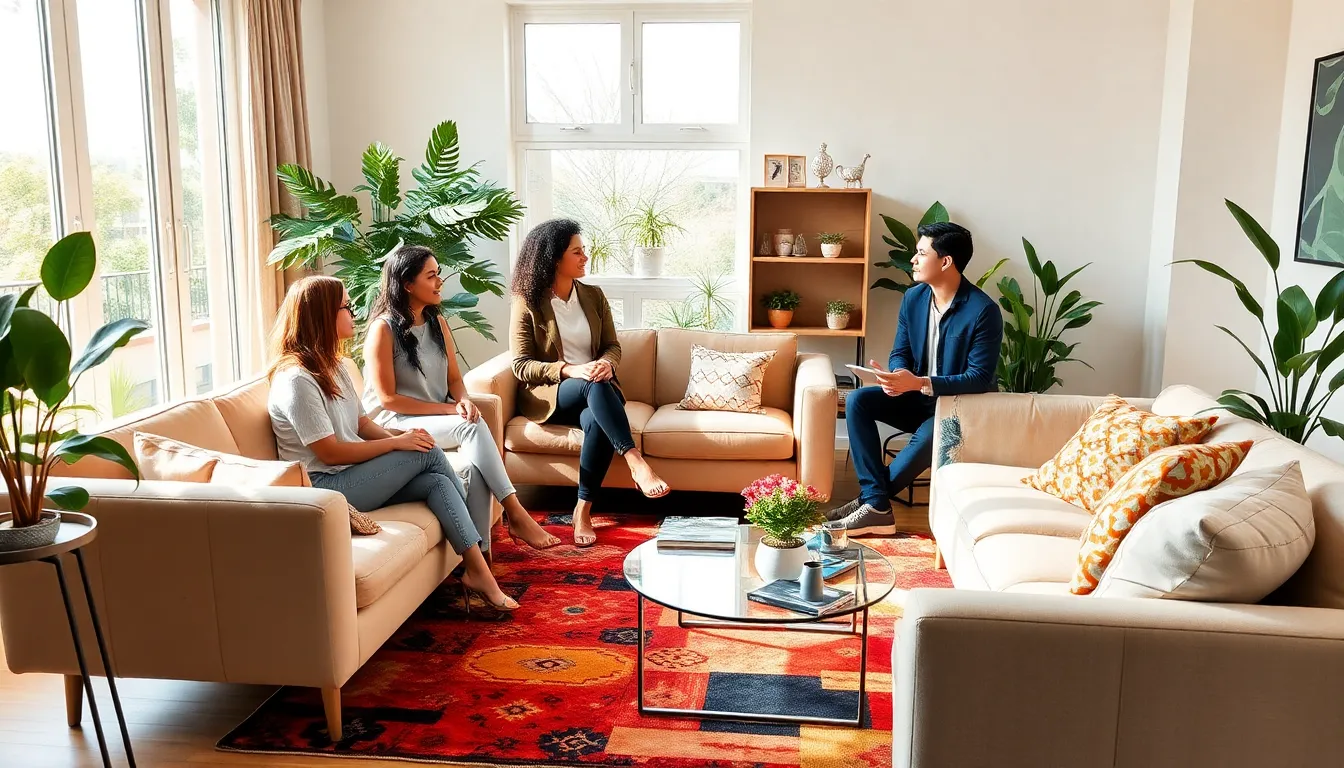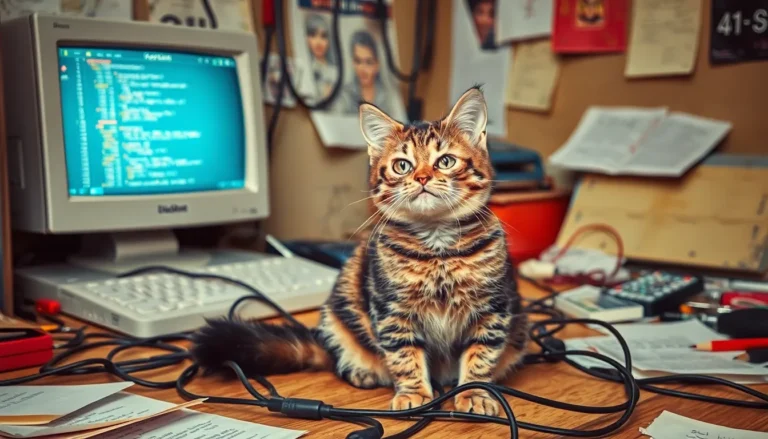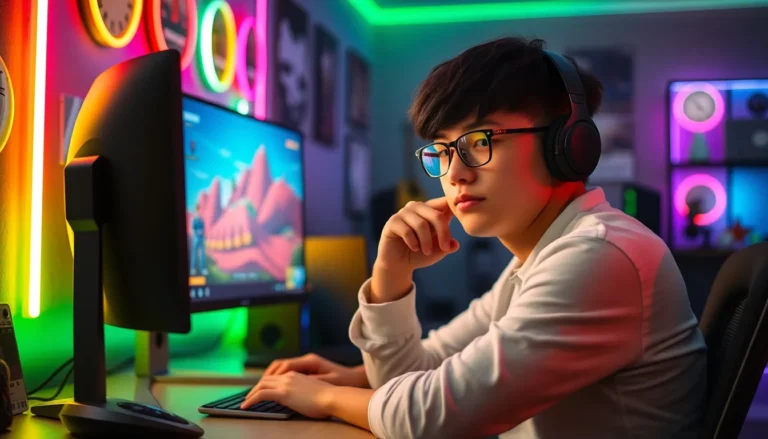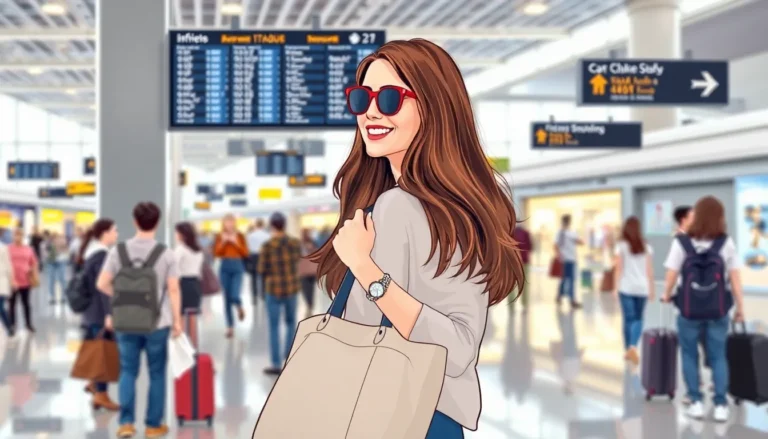As the world of interior design evolves, fresh trends emerge that redefine how spaces are experienced. From sustainable materials to bold color palettes, these trends reflect changing lifestyles and values. Homeowners and designers alike are embracing innovative ideas that not only enhance aesthetics but also promote well-being and functionality.
In 2023, interior trends are all about creating harmonious environments that blend comfort with style. Whether it’s incorporating natural elements or opting for multifunctional furniture, these trends cater to the modern desire for both beauty and practicality. Discovering what’s in vogue can inspire anyone looking to refresh their living space and make it a true reflection of their personality.
Table of Contents
ToggleOverview of Interior Trends
Interior trends continuously evolve, reflecting the dynamic nature of lifestyles and cultural values. Current trends focus on sustainability, emphasizing materials that are eco-friendly and have minimal environmental impact. Natural materials, such as reclaimed wood and organic textiles, enhance the connection to nature, creating serene living spaces.
Bold color palettes gain traction in 2023. Vibrant hues and mixed patterns contribute to expressive interior design. The strategic use of colors can transform a room’s ambiance, emphasizing individuality and personal style.
Multifunctional furniture plays a crucial role in modern design. Space-saving solutions allow for flexibility in living areas, catering to urban dwellers. Pieces that serve multiple purposes facilitate easy transitions between work and leisure.
Natural elements, like indoor plants and water features, promote wellness and harmony. Integrating greenery improves air quality and adds a refreshing visual component to interiors. This trend aligns with the rising focus on mental health and well-being.
Lastly, the emphasis on comfort and style creates inviting atmospheres. Cozy textures and thoughtful layouts synthesize functionality with aesthetic appeal, ensuring spaces feel welcoming and lived-in. Through these trends, homeowners and designers can craft environments that truly resonate with personal and collective ideals.
Popular Color Palettes
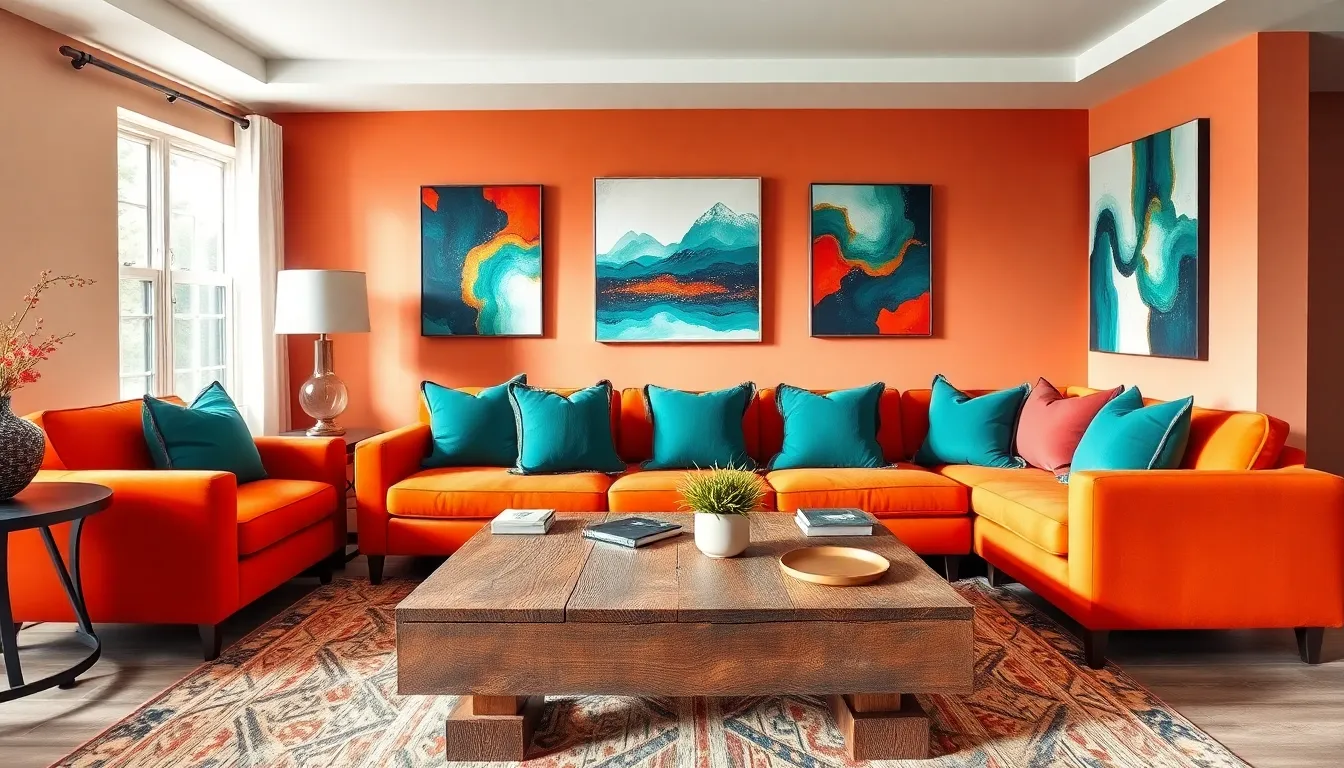
Color palettes significantly influence the ambiance of interior spaces. In 2023, homeowners and designers embrace a variety of warm and cool tones, alongside bold accent colors for dynamic and personalized environments.
Warm vs. Cool Tones
Warm tones, such as reds, oranges, and yellows, create inviting and cozy atmospheres. These hues foster vibrancy and energy, making them ideal for social spaces like living rooms and kitchens. Cool tones, including blues, greens, and purples, invoke calmness and tranquility. These colors suit bedrooms and bathrooms, promoting relaxation. Many designers mix warm and cool shades to balance and harmonize spaces, achieving a modern yet balanced aesthetic.
Bold Accent Colors
Bold accent colors serve as focal points in interior design. Shades like deep emerald green, vibrant coral, and rich navy add character and depth to any room. These bold colors often appear in statement furniture pieces, artwork, or decorative elements. Incorporating them creates visual interest and emphasizes individual style. Accent colors also enhance the overall mood and can transform a neutral space into a lively retreat. Designers recommend using bold colors strategically, ensuring a cohesive yet expressive environment.
Sustainable Design Practices
Sustainable design practices play a crucial role in modern interior trends. These practices prioritize environmental health and often reflect consumers’ growing awareness of their ecological footprint.
Eco-Friendly Materials
Using eco-friendly materials is essential for creating sustainable interiors. Designers increasingly choose reclaimed wood, bamboo, and recycled metal for furniture and fixtures. These materials not only reduce waste but also bring unique character to spaces. Organic textiles, such as linen and cotton, feature prominently in upholstery and drapery, ensuring that fiber production doesn’t harm the environment. Non-toxic paints and finishes contain fewer volatile organic compounds (VOCs), promoting healthier indoor air quality. The demand for these materials fosters an industry shift towards more sustainable sourcing and manufacturing processes.
Energy Efficiency
Energy efficiency remains a cornerstone of sustainable design. Incorporating energy-efficient appliances reduces electricity consumption, leading to lower utility bills. Smart home technology allows homeowners to control lighting and climate, optimizing energy use. Designers often recommend LED lighting, which consumes less energy and lasts longer than traditional bulbs. Installing high-performance windows also enhances insulation, reducing heating and cooling demands. These energy-efficient practices contribute to overall sustainability while improving comfort in living spaces.
Furniture Styles
Furniture styles reflect evolving design preferences, with a focus on functionality and aesthetic appeal. In 2023, several key styles stand out, each offering unique attributes that align with current interior trends.
Minimalist Aesthetics
Minimalist aesthetics emphasize simplicity and functionality. Clean lines and uncluttered spaces define this style, creating an ambiance of calm. Furniture in this category often features neutral colors, such as whites, grays, and beiges, which promote a serene environment. Key characteristics include multi-functional pieces, like sofa beds and nesting tables, which maximize space in smaller living areas. Natural materials, such as wood and stone, highlight the beauty of minimalism through organic forms and textures.
Vintage and Retro Revival
Vintage and retro revival styles celebrate the charm of bygone eras. This trend reintroduces furniture designs from the 1950s to the 1980s, such as mid-century modern pieces characterized by tapered legs and warm woods. Bright colors and bold patterns add personality and nostalgia, allowing for playful combinations in contemporary settings. Accent chairs, like Eames loungers, and sideboards with graphic designs invite conversation and serve as focal points. Mixing vintage items with modern decor creates an eclectic atmosphere, making spaces feel personalized and unique.
Decorative Elements
Decorative elements enhance the overall aesthetic of a space, bringing depth and personality to interiors. In 2023, incorporating diverse textures, patterns, art, and accessories remains essential for creating inviting environments that reflect individual style.
Textures and Patterns
Textures and patterns play a significant role in interior design, offering visual interest and tactile experiences. Natural textures, like woven fabrics and stone finishes, contribute warmth and comfort. Layering different textiles, such as velvet, linen, and cotton, helps create a cozy atmosphere. Patterns, especially geometric and botanical designs, are gaining popularity as they provide dynamic visual effects. Combining elements, like bold prints with softer textures, can establish balance while promoting an engaging visual narrative.
Art and Accessories
Art and accessories personalize each space by adding unique flair and character. Statement pieces, such as oversized paintings or sculptural elements, stand out as focal points in a room. Wall art in varying styles, from abstract to figurative, enables individual expression and sparks conversation. Accessories, including vases, throws, and decorative pillows, enhance comfort and style. Incorporating handmade or locally sourced items supports artisans while promoting a sense of authenticity. Curating collections of travel souvenirs or vintage finds adds storytelling elements to spaces, creating a personal connection to the design.
The interior trends of 2023 showcase a harmonious blend of style and sustainability. Emphasizing eco-friendly materials and multifunctional furniture reflects a growing awareness of environmental impact while catering to modern lifestyles. Bold color palettes and mixed patterns allow for personal expression, transforming spaces into vibrant retreats.
As homeowners and designers embrace these trends, they create environments that not only look good but also promote wellness and comfort. By integrating natural elements and prioritizing functionality, today’s interiors become a true reflection of individuality and collective values. This evolving landscape encourages everyone to rethink their spaces, making them more inviting and meaningful.

